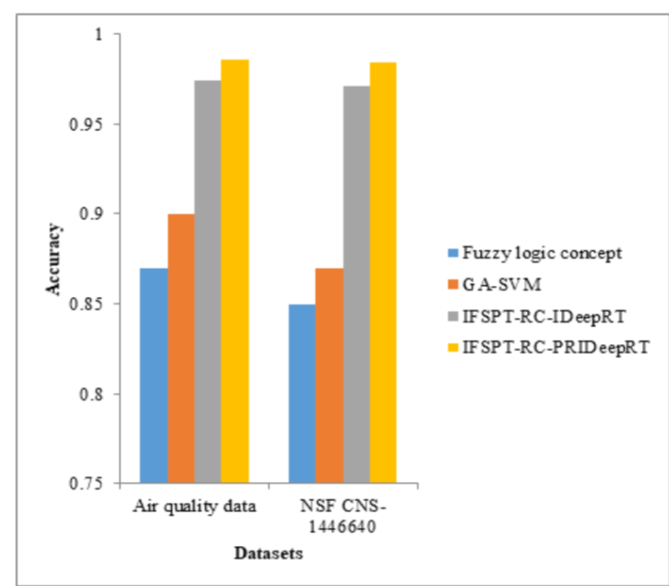


Indian Journal of Science and Technology
Year: 2021, Volume: 14, Issue: 1, Pages: 22-32
Original Article
T Rajalakshmi1*, S Sathappan2
1Research scholar, Department of Computer Science, Erode Arts & Science College, Erode, Tamil Nadu, India
2Associate Professor, Department of Computer Science, Erode Arts & Science College, Erode,Tamil Nadu, India
*Corresponding Author
Email: [email protected]
Received Date:26 September 2020, Accepted Date:20 December 2020, Published Date:11 January 2021
Objectives: To decrease the model parameters in Reinforcement learning with Compressed Improved DeepRT (RC-IDeepRT) for Cyber-Physical System (CPS) data analysis, a method is proposed in this study. Methods: A parameter reduction method is proposed to decrease the model parameter by combining pruning and factorization. The pruning may not save the memory usage in traditional computers unless sparse matrices are supported and explicitly used. However, it directly reduces the usage of synapses in neuromorphic architecture. This method minimizes the total number of required neurons and synapses given a trained model. Findings: The integration of factorization and pruning allows creating sparsely connected reinforcement learning with deep learning network from a given trained network. The dangling connections in the network are determined and the remaining connections of the dangling neurons are further pruned. The pruned network is cost-effective and it classifies the CPS data effectively. Novelty: This proposed method tries to minimize the number of parameters in RC-IDeepRT. The number of parameters becomes a good surrogate metric assuming the deep learning architecture accommodates sparse networks effectively. The reduced model parameters are used for CPS data classification.
Keywords: Cyber-physical system; deep learning; DeepRT; reinforcement with compressed improved DeepRT; parameter reduction method; pruning; factorization
© 2021 Rajalakshmi & Sathappan.This is an open access article distributed under the terms of the Creative Commons Attribution License, which permits unrestricted use, distribution, and reproduction in any medium, provided the original author and source are credited. Published By Indian Society for Education and Environment (iSee)
Subscribe now for latest articles and news.